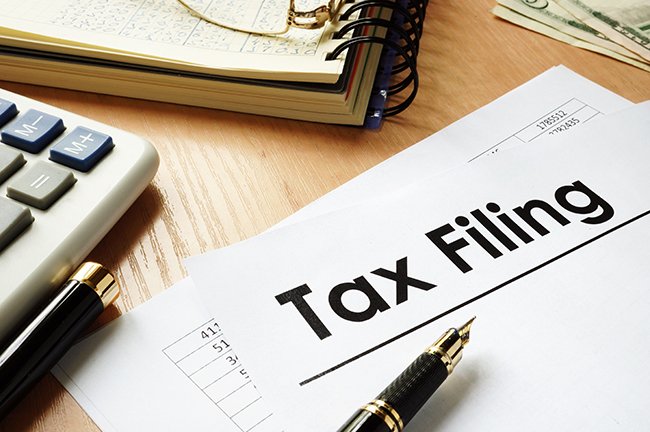Income tax owed for a year must be paid, in full, on or before April 30 of the following year. This year, that means that individual income taxes owed for 2017 must be remitted to the Canada Revenue Agency (CRA) on or before Monday, April 30, 2018. No exceptions and, absent extraordinary circumstances, no extensions.
Perhaps not surprisingly, the CRA tries to make it as easy as possible for taxpayers to remit what they owe, by providing a wide range of methods by which payment can be made. There are, in fact, no fewer than seven separate options available to individual residents of Canada in paying their taxes for the 2017 tax year. The options open to taxpayers who must make a payment to the taxman are set out below.
Pay using online banking
Millions of Canadians do most or all of their banking using the online services of their particular financial institution. The list of financial institutions through which a payment can be made to the CRA is a lengthy one (available at https://www.canada.ca/en/revenue-agency/services/about-canada-revenue-agency-cra/pay-online-banking.html), and includes all of Canada’s major banks and credit unions.
The specific steps involved in making that payment will differ slightly for each financial institution, depending on how their online payment systems are configured. What’s important to remember is that the nature of the payment (i.e., current year tax return, as distinct from current year tax instalment payments) must be specified, and the taxpayer’s social insurance number must be provided, in order to ensure that the payment is credited to the correct account.
It is not necessary to access any particular CRA form in order to make an online payment of taxes through one’s financial institution.
Paying at your financial institution
For those who don’t use online banking, or simply prefer to make a payment in person, it is possible to pay a tax amount owed at the bank. Doing so, however, requires that the taxpayer have a personalized remittance form.
Since that remittance is specific to the taxpayer, it’s not possible to simply print that form from the CRA website. However, taxpayers who wish to obtain such a personalized remittance form can do so by calling the CRA’s Individual Income Tax Enquiries line at 1-800-959 8281 and requesting that one be sent to them by mail.
Using the CRA’s My Payment
The CRA also provides an online payment service called My Payment. There is no fee charged for the service, and it’s not necessary to be registered for any of the CRA’s other online services in order to use My Payment.
What is necessary is that the taxpayer have a debit card with a VISA Debit, Debit MasterCard, or InteracOnline logo from a participating Canadian financial institution, as My Payment is set up to accept payment using only those cards. Anyone intending to use My Payment should first confirm that the amount of any payment to be made is within the daily or weekly transaction limits imposed by the particular financial institution.
A list of participating financial institutions for each type of card, and more details on this payment method, can be found at https://www.canada.ca/en/revenue-agency/services/e-services/payment-save-time-pay-online.html.
Payment by credit card
While it is possible to pay one’s taxes using a credit card, such payments can only be made through third-party service providers (that is, payments by credit card cannot be made directly to the CRA), and such third-party service providers will impose a fee for the service.
There are only two such service providers listed on the CRA website, and links to each are available at https://www.canada.ca/en/revenue-agency/services/about-canada-revenue-agency-cra/pay-credit-card.html.
Payment through a service provider
There are a number of third party service providers which will accept payments and remit them on the taxpayer’s behalf to the CRA. However, the majority of such services are more oriented toward providing services to businesses, and most of those listed on the CRA website do not handle payments of individual income tax amounts owed.
The full listing of third-party service providers can be found on the CRA website at https://www.canada.ca/en/revenue-agency/services/about-canada-revenue-agency-cra/pay-a-service-provider.html.
Payment by pre-authorized debit
It’s possible to set up a pre-authorized debit (PAD) arrangement with the CRA, authorizing them to debit the account for an amount of taxes owed, on dates specified by the taxpayer.
Individuals who make instalment payments of tax throughout the year may already have such an arrangement in place and can certainly use that existing arrangement to arrange a PAD of any balance of taxes owed for the 2017 tax year. However, any such arrangement must be made at least five business days before the payment due date of April 30. A taxpayer who makes a payment of taxes only once a year is likely better off using another of the available payment methods.
This year, there is another option for taxpayers who have their return prepared and E-FILED by an authorized electronic filer. Such taxpayers can have that E-FILER set up a PAD agreement on their behalf in order to make a “one-time” payment for a current year tax amount owed. Details on how to make that arrangement are outlined on the CRA website at https://www.canada.ca/en/revenue-agency/services/about-canada-revenue-agency-cra/pay-authorized-debit.html.
Payment by cash or debit card
It is still possible to pay one’s taxes in cash, or by using a debit card. Such payments are made, not at CRA offices, but at Canada Post outlets.
However, while a cash payment may be a low-tech option, the requirements for making a cash or debit card payment are not. In order to do so, the taxpayer will need a self-generated QR (quick response) code. Such code can be created by following a link found on the CRA website at https://www.canada.ca/en/revenue-agency/corporate/about-canada-revenue-agency-cra/pay-canada-post.html. The QR code created is provided to a clerk at a Canada Post outlet, who uses the information in the code to properly credit the payment made. Service fees are levied for this payment method.
It’s important for all taxpayers to realize that the payment deadline of April 30 requires that the CRA receive payment by that date. The Agency considers that a payment has been made only when it actually receives that payment, or the payment is received by a member of the Canadian Payments Association (which would include most Canadian financial institutions).
The majority of payment options now available to Canadians involve online transactions or the use of third party service providers. Both such methods can mean some delay in receipt of the payment by the CRA, as a result of the time required for processing of the payment by the financial institution or third party. Consequently, taxpayers who make their tax payments online or using a third-party service provider are well advised to consider that time lag in deciding when to make their payment; waiting until April 30 to do so likely isn’t a good idea.
Those who make their payment in person at a financial institution (using a personalized remittance form, as outlined above) can make their payment on April 30, as the date stamped on the remittance form is considered to be the date on which such payment is received by the CRA.
The number and variety of tax payment methods available to individual taxpayers can, in and of itself, be somewhat confusing. The CRA provides a chart on its website identifying each possible payment method, and the kinds of payments which can be made through each. That chart can be found on the CRA website.
The information presented is only of a general nature, may omit many details and special rules, is current only as of its published date, and accordingly cannot be regarded as legal or tax advice. Please contact our office for more information on this subject and how it pertains to your specific tax or financial situation. Virtus Group LLP is the largest independent CPA accounting and business advisory firm in Saskatchewan. With offices in Saskatoon, Regina and Estevan, we are a full service firm ready to help you and your business. Questions? Please get in touch with us using the form below.

